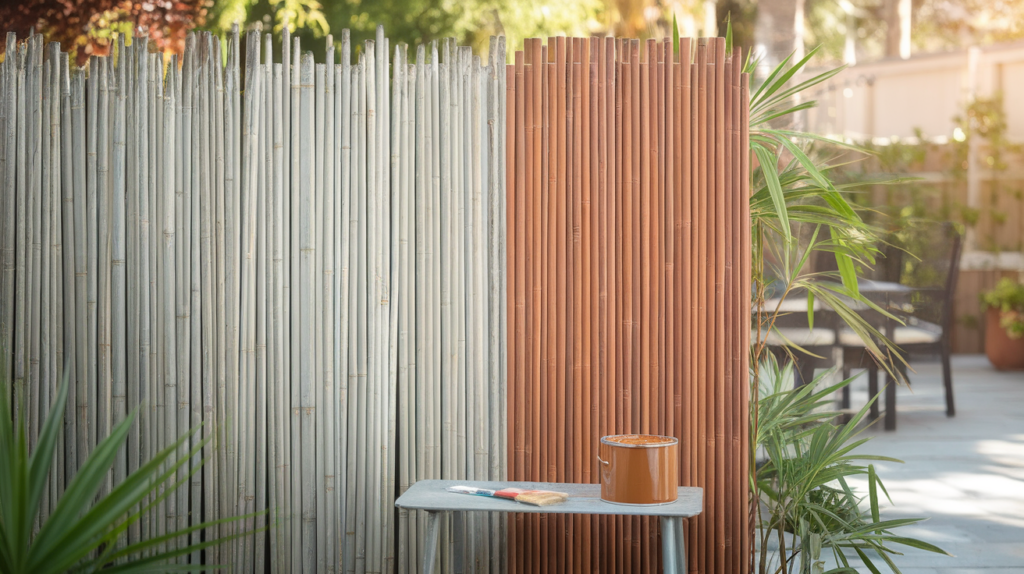Bamboo looks beautiful when it’s new, but after a few weeks in the sun and rain, it can start to fade.
I know how frustrating it is to see your once-rich bamboo screening turn pale and worn out. The good news is that you don’t have to replace it; you can bring it back to life with a simple stain.
Yes, bamboo can be stained just like wood, and it’s not as hard as you might think.
I’ll walk you through exactly how to do it, from cleaning the surface to choosing the right stain and applying it step by step.
You’ll learn how to make your bamboo look fresh and protect it from weather damage at the same time.
If you’ve been searching for a way to fix faded bamboo, this guide will give you clear, easy steps that actually work. I’ve seen it done, and I’m here to help you do it too.
Why Stain Bamboo?
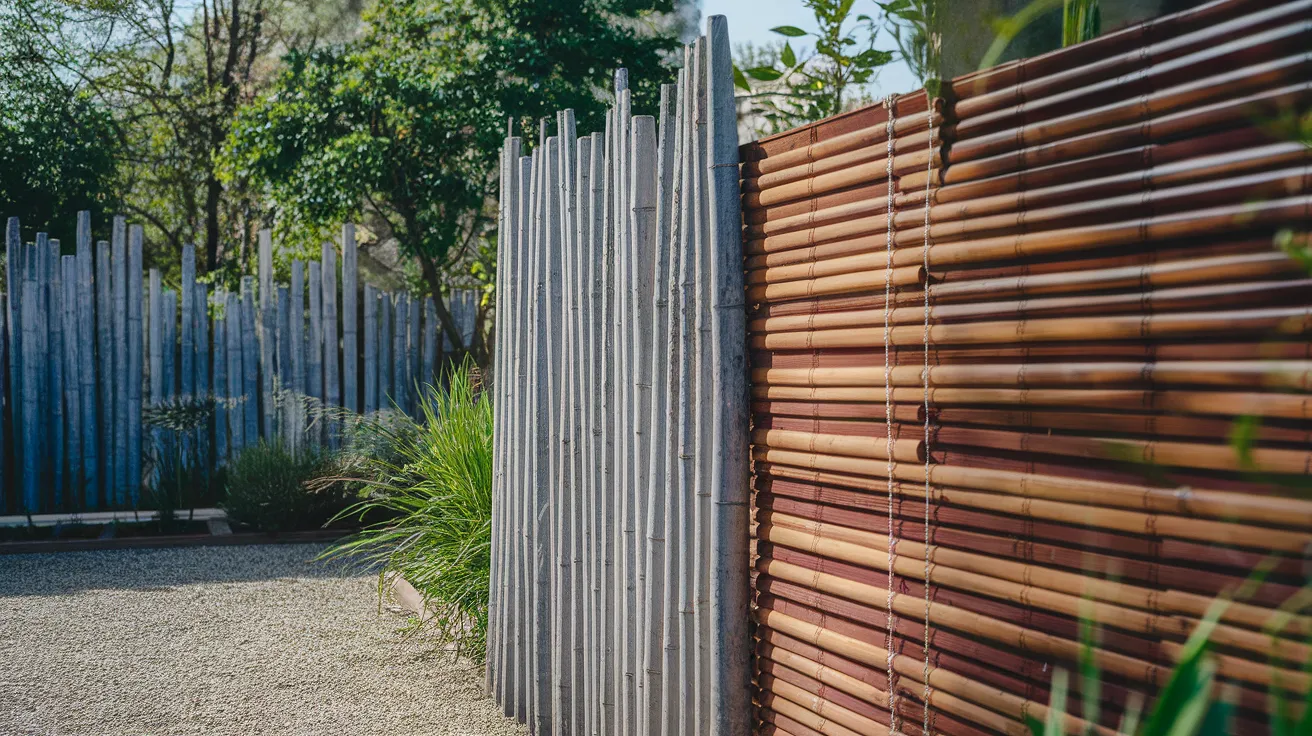
Bamboo may be strong, but it still weathers over time, especially outdoors.
After about six to eight weeks, you’ll probably notice the color starting to fade. What once looked rich and natural might now seem dull and washed out.
This is normal. Rain, sunlight, and general wear all play a part in changing the way bamboo looks.
Staining bamboo helps bring back that original color or lets you try something new. It’s also a smart way to protect your screen from future damage.
A good stain acts like a shield, blocking UV rays and sealing out moisture. That means fewer cracks, less fading, and a longer life for your bamboo.
If you want your bamboo to look better and last longer, staining is a simple fix. It works well, doesn’t take much time, and gives fast results.
It’s one of the easiest ways to keep your outdoor space looking sharp without starting from scratch.
Tools You’ll Need

Before you start, make sure you have the right tools and materials. You don’t need anything fancy- just a few basic items to get the job done well. Here’s what to gather:
- Weathered bamboo screening: Make sure it’s dry and ready for staining.
- Clean cloth or rag: For wiping off dust, dirt, and any leftover coating from when it was first made.
- Exterior water-based wood stain: Look for a product made for outdoor use. In the video, they used Simply Wood Care HS Water-Based Deck Stain in a dark color.
- Paintbrush: A standard brush works fine for spreading the stain evenly.
Having everything ready before you begin will make the job smoother. It’s also important to work on a dry day so that the stain can set properly.
Once you’ve got your supplies, you’re ready to start bringing your bamboo back to life.
Step-by-Step Guide to Staining Bamboo
Below is a simple guide to help you get the best results from preparing the surface to applying the stain with care.
Step 1: Prepare the Bamboo Surface
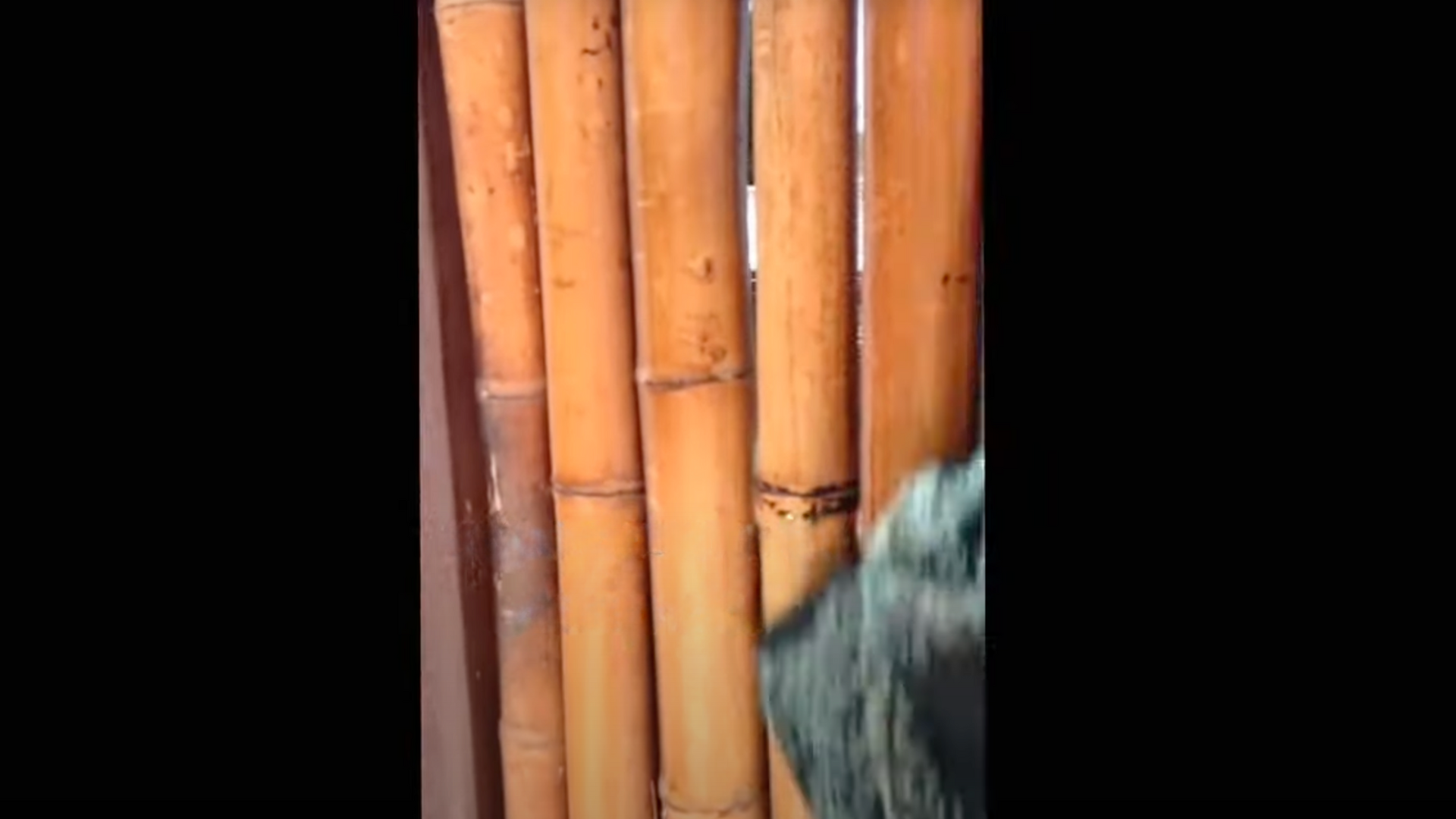
Before you stain, it’s important to clean the bamboo. Dirt, dust, or leftover coatings from the factory can stop the stain from soaking in properly.
Use a clean cloth or rag to wipe down every part of the bamboo screen. Make sure it’s dry and free of grime. Pay attention to cracks and edges where dirt can hide.
This step may seem small, but it really helps the stain stick better and look more even. Don’t skip it- clean bamboo means better results.
Once everything is clean and dry, your bamboo is ready for the next step.
Step 2: Choose the Right Stain
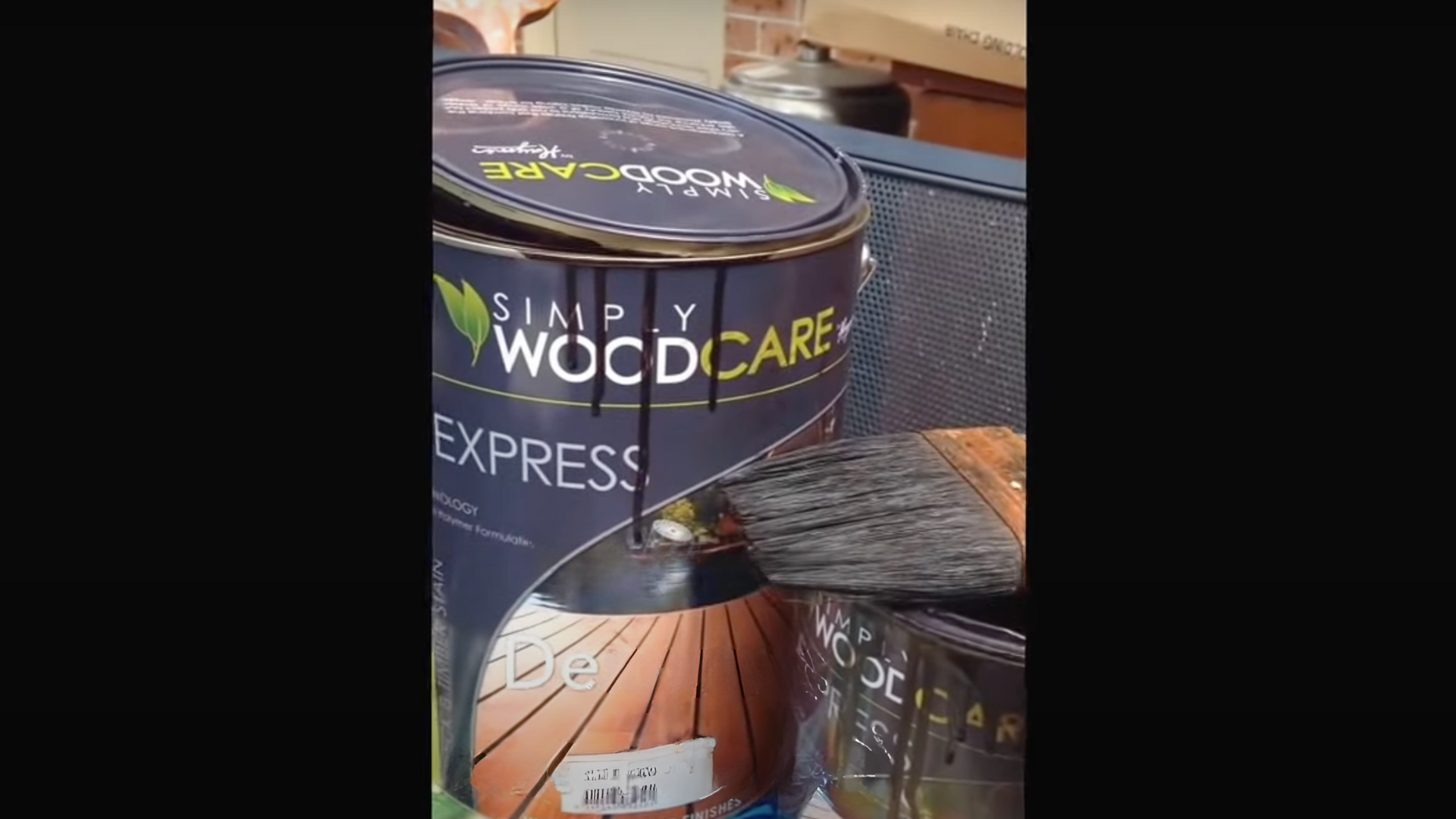
Choosing the right stain is important for both looks and protection. For outdoor bamboo, go with a water-based wood stain made for decks or fences.
These stains are made to handle the sun, rain, and weather changes. They also dry faster, are easier to clean up, and are better for the environment than oil-based options.
You’ll find a variety of color choices, from light to dark. Pick one that fits your style and make sure the label says it’s safe for outdoor wood.
A good stain brings out the bamboo’s natural beauty and helps it last much longer.
Step 3: Apply the First Coat
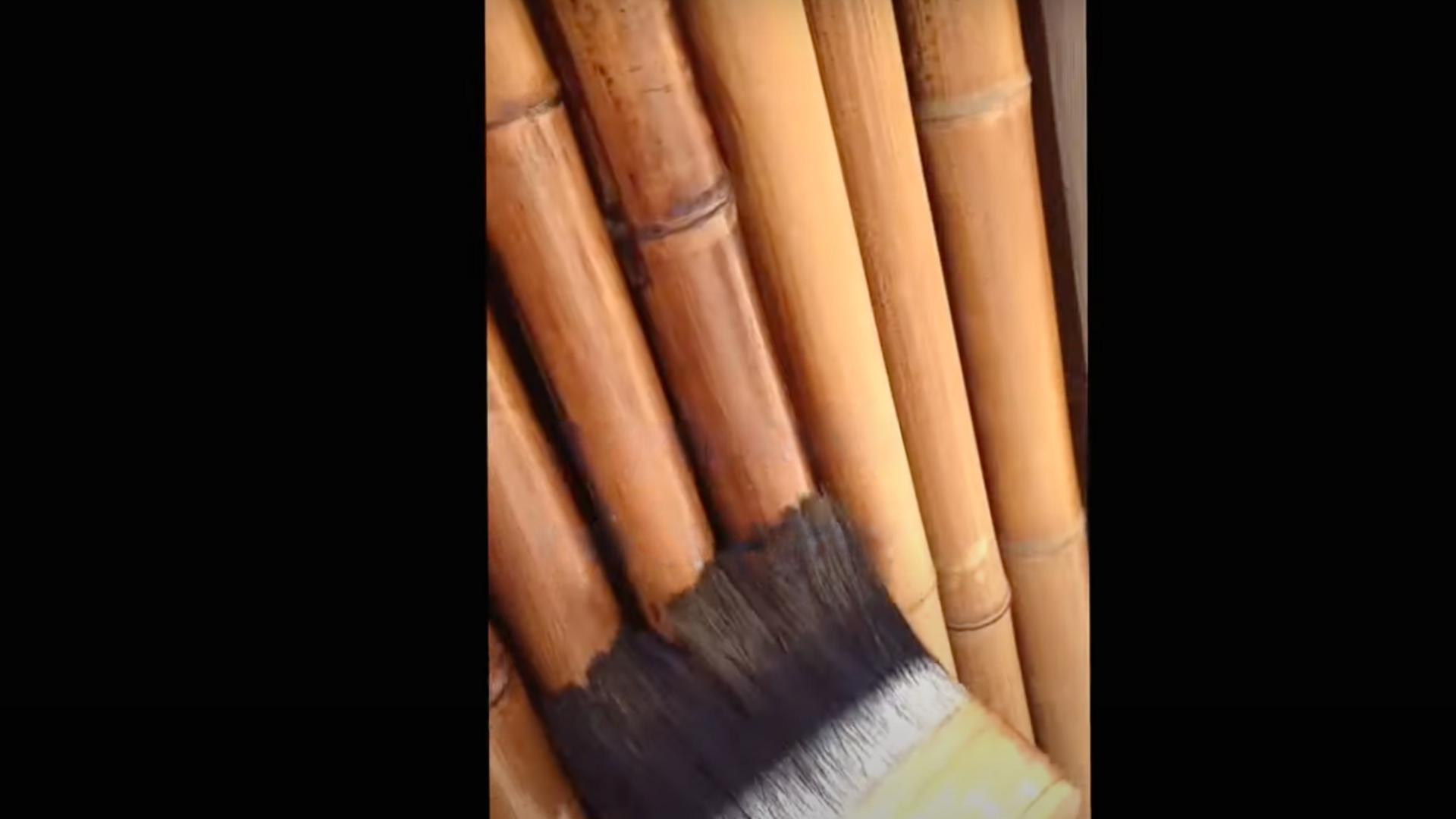
Now it’s time to stain. Dip your paintbrush into the stain and start brushing it onto the bamboo.
Use long, even strokes and cover every side, front, back, and edge. Take your time and make sure you don’t miss any spots.
Work the stain into cracks and around the edges so it all looks even. Try not to overload the brush; too much stain at once can drip or pool.
This first coat makes a big difference in how your bamboo looks. Once you’re done, let it dry completely before moving to the next step or adding more coats.
Step 4: Observe the Results

After the first coat dries, step back and take a look. You should see a big change in your bamboo, which will look deeper in color and much fresher.
Compare the stained parts to any unstained sections, and you’ll notice how much better it looks.
One coat may be enough, but if you want a richer color or more protection, you can add a second coat. Just wait for the first one to dry fully.
Watching the bamboo transform is the fun part- it shows that your work is paying off and your outdoor space is getting a fresh new look.
Want to see the full process in action? Check out this helpful video by @Crockers Paint and Wallpaper to watch each step of staining bamboo.
Tips for Best Results
A few simple tips can help your bamboo staining project turn out even better. These small steps make a big difference in how the stain looks and how long it lasts.
- Test first: Always try the stain on a small, hidden area before doing the whole screen. This lets you check the color and see how the bamboo reacts.
- Pick a dry day: Make sure the weather is clear. Rain or high humidity can stop the stain from drying properly.
- Let it dry between coats: If you’re adding more than one coat, wait until the first is fully dry.
- Keep it looking good: Over time, reapply the stain every couple of years to keep the bamboo looking fresh and protected.
Conclusion
Staining bamboo is one of the easiest ways I’ve found to make old screening look new again.
It doesn’t take a lot of tools or skill- just some time, the right stain, and a little care.
I like that it not only improves the color but also helps protect the bamboo from the sun and rain. If your bamboo looks faded or dull, staining is a simple fix that really works.
Just remember to clean it first, pick a good stain, and take your time applying it. You don’t need to be an expert to get great results.
I’ve seen how even one coat can make a big difference. And if you take care of it over the years with a fresh coat when needed, your bamboo will stay looking great much longer.
Give it a try- I think you’ll be glad you did. It’s a quick project that brings lasting results outdoors.

